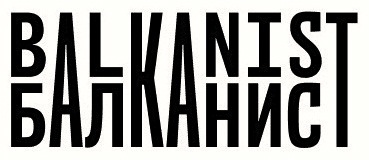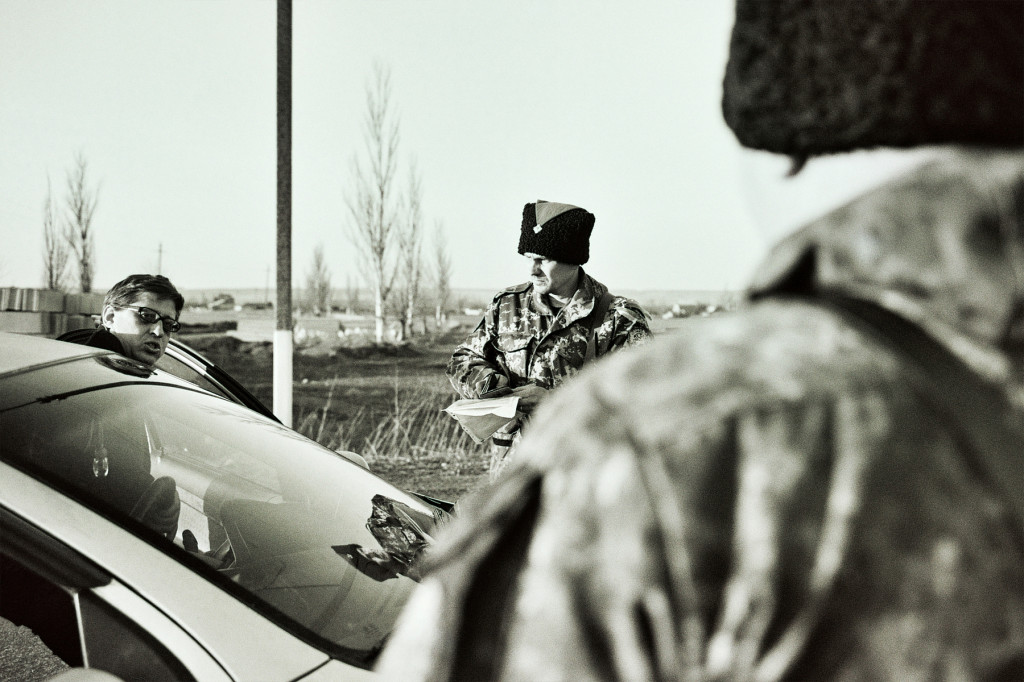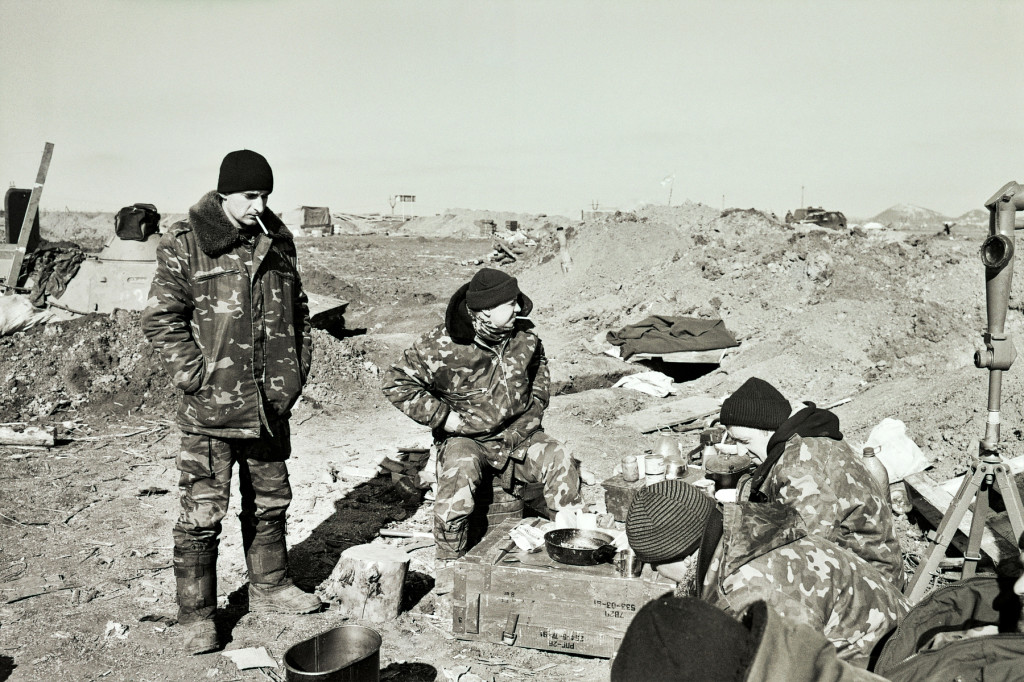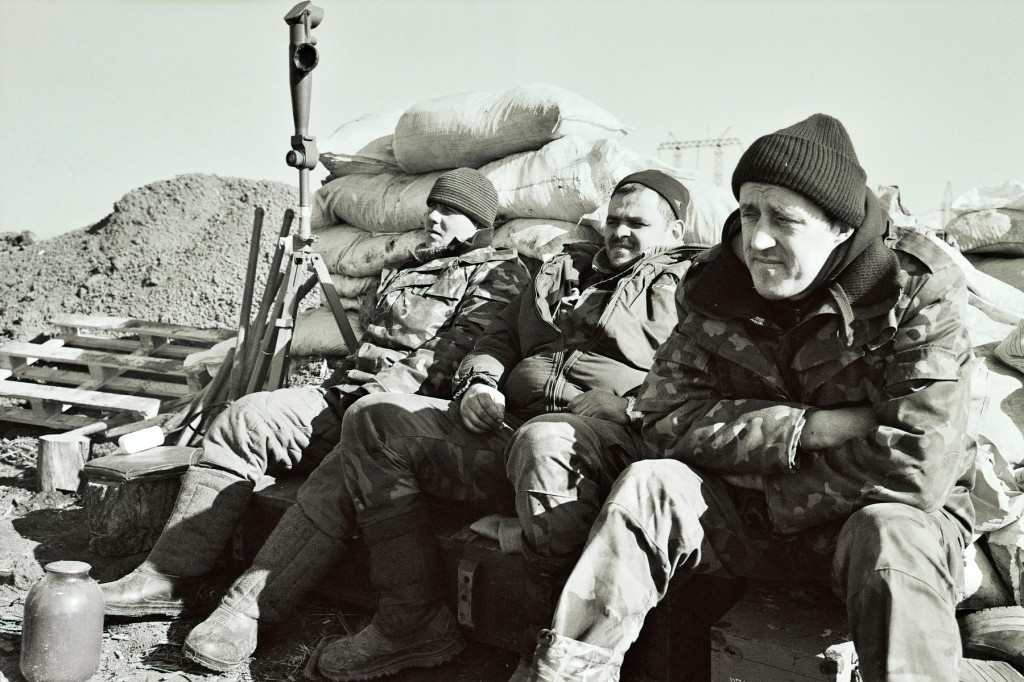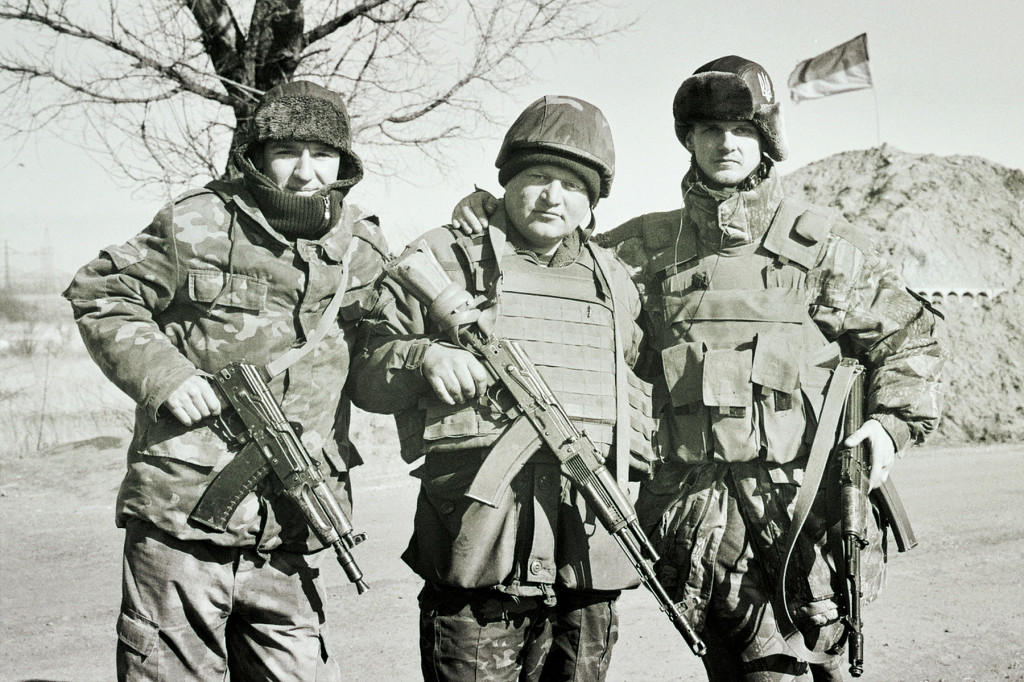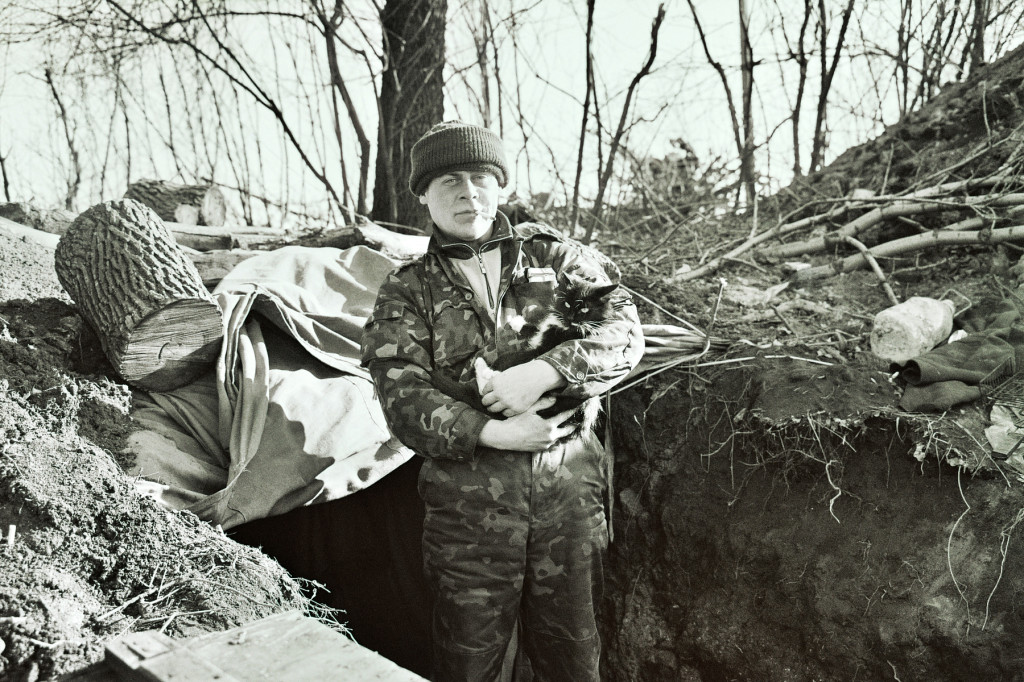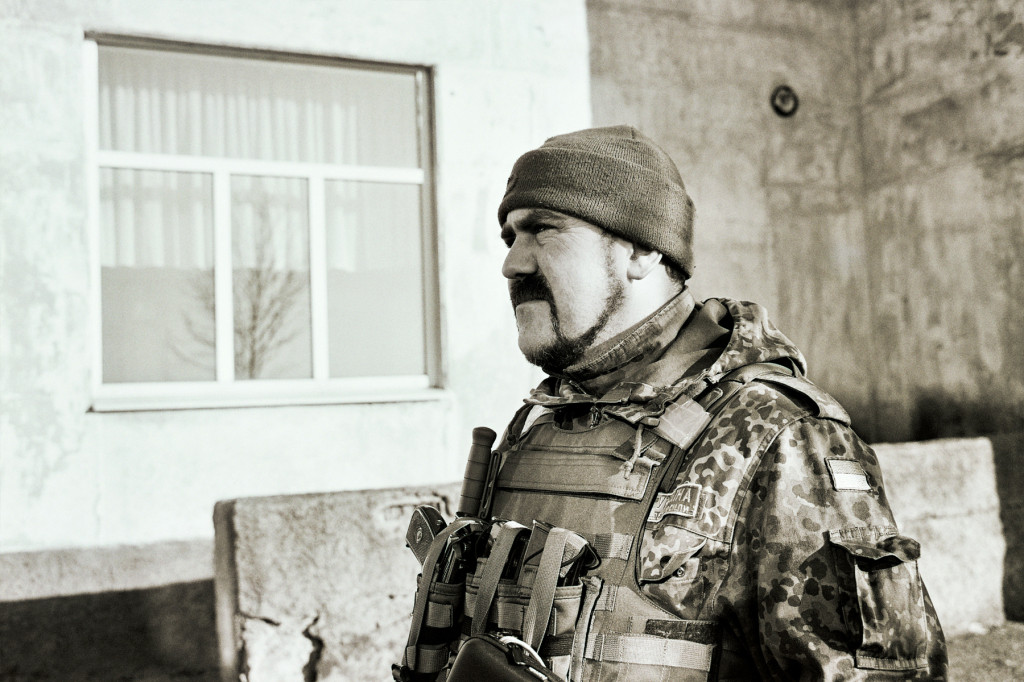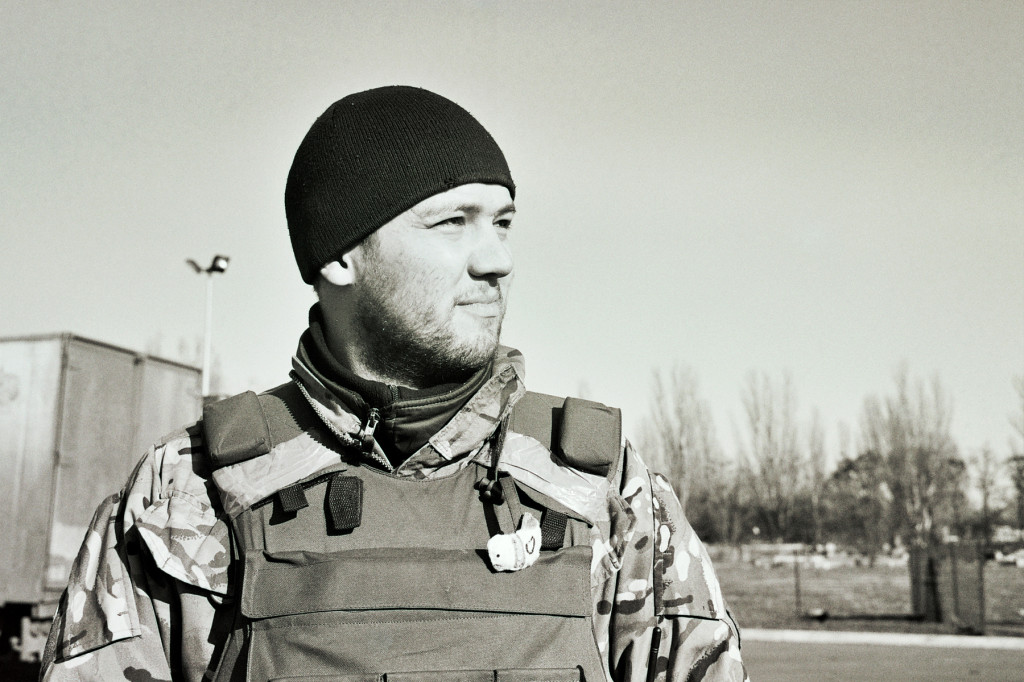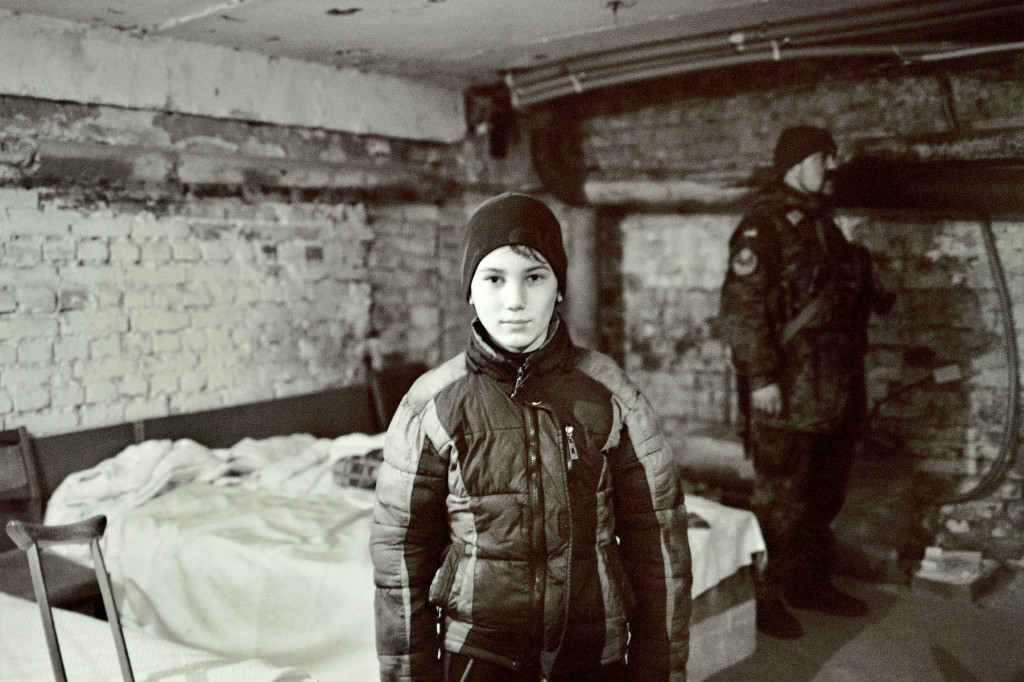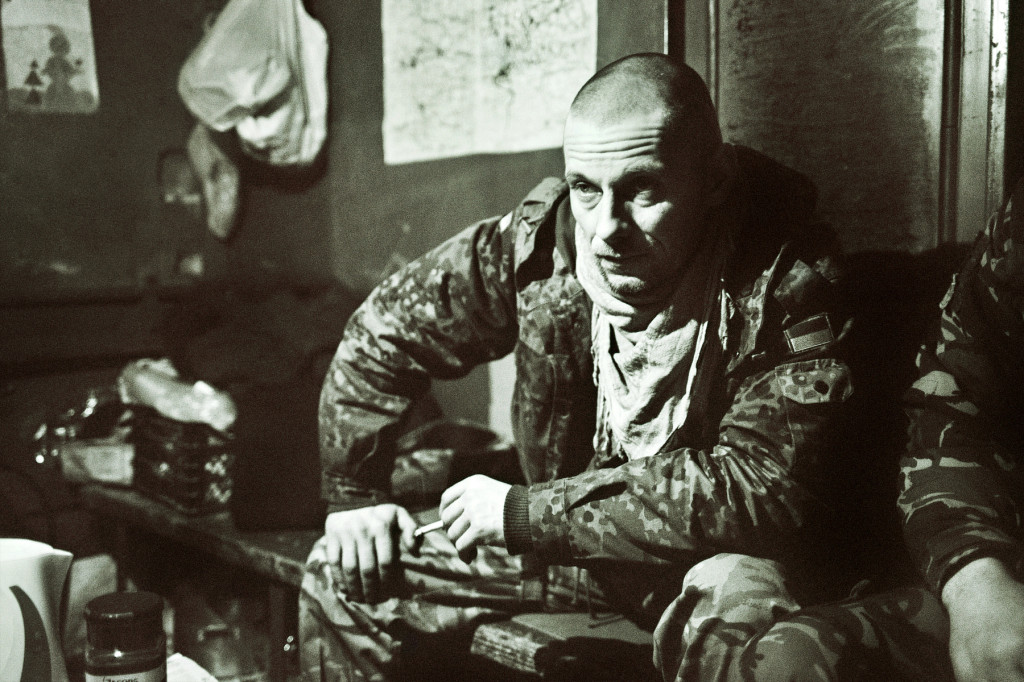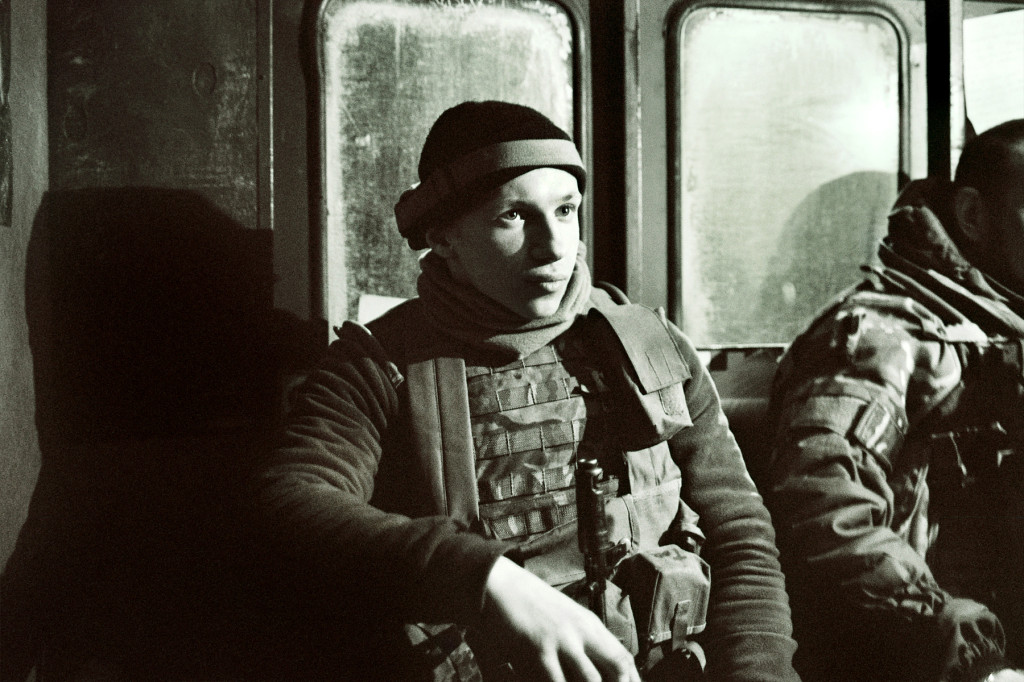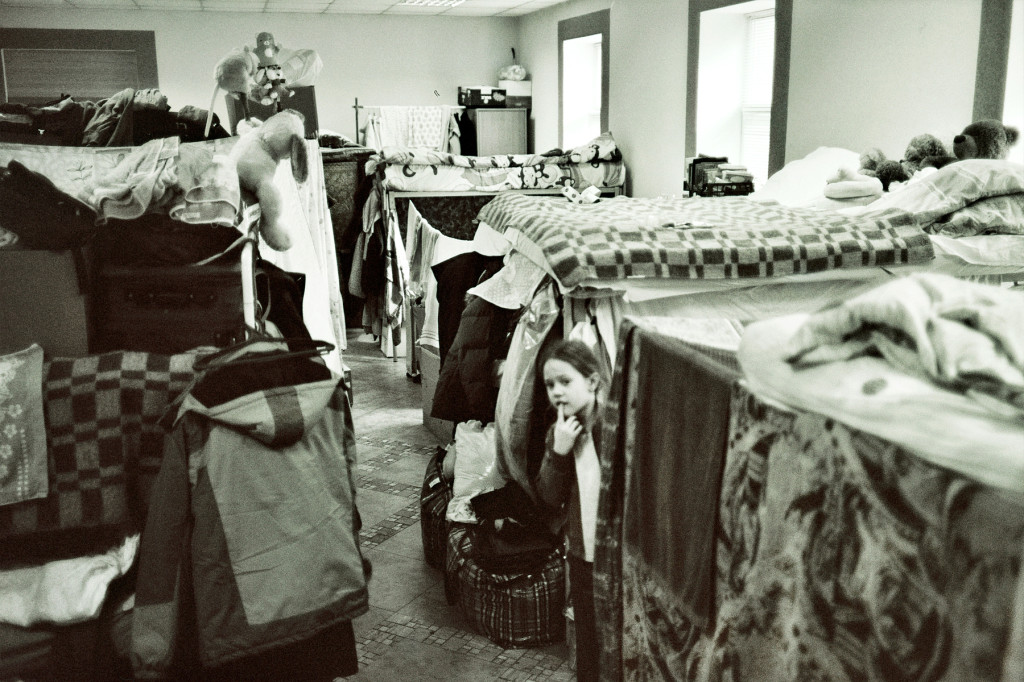Underfunded and underequipped, the Ukrainian army that photojournalist Christopher Bobyn documented on the frontline near Donetsk is a crew of professional soldiers making due with limited resources. Reinforcing their positions amid a ceasefire, they brace to hold the line indefinitely against Russian-backed separatists while internally displaced Ukrainians seek refuge from the war.
At the border of the Donetsk Oblast, tank traps mark the start of the frontline of the Ukrainian military’s “ATO”, or Anti Terrorist Operation, as the war between government troops and pro-Russian separatists is known in Ukraine.
Cossack volunteer soldiers police a frontline checkpoint, preventing civilians from entering the war zone. This sight stretches the length of both the Donetsk and Luhansk Oblasts, as the government seals off not just the active ATO area, but both entire Oblasts at their western borders with the rest of Ukraine. The army lets residents out, but few can go eastwards through the checkpoints – the entire regions are being secured to minimise civilian casualties in the event of further conflict. Even residents who have fled the fighting and try to return home to gather belongings are turned back at the checkpoints.
The soldiers of the 28th motorized infantry brigade near the town of Mar’inka have created a winding series of WW1-like trenches along the front. Their Soviet-era Armoured Personnel Carriers (APC’s) are dug into the ground so that only the guns protrude above the mud, alongside bunkers that serve as homes for months on end. “This won’t be a ceasefire, so we must use the time to prepare for more war”, said soldiers of 9 Company.
At the line of contact with pro-Russian Separatists, the normally bleak Steppe becomes harsher still: earth pockmarked from artillery strikes and reduced to mud by manoeuvring tanks, crossed with freshly dug trenches and dotted with bunkers. It’s a scene you’d expect from World War I, complete with soldiers cooking in the mud and peering over sandbag trenches with periscopes.
The sandbag trenches of “Station 9” have been home to the men of 6 Company for over three months. The mechanised unit has two APC’s buried into trenches and a single aging anti-tank gun pre-locked on a separatist position, waiting only to be fired. Commander “Storm”, as he is nicknamed, recalls, “We were last shelled on February, Friday the 13th, which seems fitting. But they didn’t hit us directly, the Russians can’t aim.”
The soldiers of the Ukrainian Army wear uniforms that are mismatched hand-me-downs from western allies, here wearing British, Polish and German field-gear. While all wear new matching Ukrainian flags sewn onto one shoulder, the other shoulder is often still emblazoned with the Union Jack or German flags.
Commander Michael and Sergeant “Wind” of the Ukrainian Army’s “CIMIC Unit”, which was formed to supply civilians and soldiers with crucial items in the ATO. They drive up the frontline daily, encountering displaced residents and exhausted frontline troops. Both citizens and soldiers in the ATO now rely on the goods donated by aid groups. The army is forced to supplement its own resources with offerings from Ukrainians: it is a military with a government so broke that it can’t properly care for its own men without private contributions.
Commander Michael is seen behind Sergei (10), who lives in a Soviet-era basement shelter in the frontline town of Mar’inka. Together with his brother and parents, they are dependent on Commander Michael and his CIMIC Unit for all food and hygiene items while the war continues on all around them.
An internally displaced mother and child from Donetsk are pictured in their new home at a school-turned-collective centre in Kurakovo, inside the government-controlled frontline. The former school in the ATO is now home to 20 families unable to find or afford suitable dwellings outside the conflict zone.
Over evening coffee in a bunker, Sergeant Artem of the Ukrainian Army’s CIMIC Unit looks at mobile pictures of killed comrades in body bags. The CIMIC Unit is also responsible for transporting the dead to morgues and contacting families of soldiers killed-in-action. Art sent from children in Kiev hangs in the background.
Men of the ultranationalist paramilitary group “Right Sektor” relax in a mobile bunker after a night spent fighting separatist positions at the Donetsk airport. This group, which includes an 18-year-old volunteer, is among the best equipped and funded in the ATO, though it does not fall under official Ukrainian Army command. While they coordinate their operations in the ATO with the Army, Right Sektor operates independently, though the government relies on such paramilitary groups to supplement its own forces.
On the outskirts of Kiev, the Gorlovka collective centre is home to 180 people, all internally displaced Ukrainians from Donetsk or Luhansk. Each family receives two beds, from which they make tent-like dwellings with sheets, with 6-8 families to a room.
Andrei (39) and Evgeniya (31) pose with their six-month-old son Danilo, who was conceived in Luhansk but born in the refuge of the collective centre in Kiev — their home for the past eight months. Andrei was an engineer in Luhansk and is unable to find work in Kiev, but will not return to Luhansk for fear of reprisals from pro-Russian separatists for fleeing with his family to the Ukrainian capital.
Gagik (45) and daughter Diana (8) sit with their only belongings in the Gorlovka collective centre in Kiev. Fleeing Luhansk in a bus, they left with only what they could carry before their apartment was destroyed by artillery. Hoping to find work in Kiev as an electrician, Gagik refuses to join family in Russia, which he insists offers an even worse future for his daughter than life in displacement in Ukraine.
Ira (9) and Miraslava (7), displaced from Luhansk, dress for ballet practice amid their new communal dwellings in Kiev’s Gorlovka collective centre.
Vladimir (11) sits in the bedroom he shares with his parents. His father is a displaced master-carpenter from Luhansk. With their apartment block destroyed by shelling, they now rent a small cottage an hour outside of Kiev, which lacks indoor plumbing and access to paved roads. Vladimir, who speaks Russian, now walks four kilometres to the closest village to attend classes in Ukrainian, attempting to adapt to a new home, environment and language after the trauma of displacement and war.
